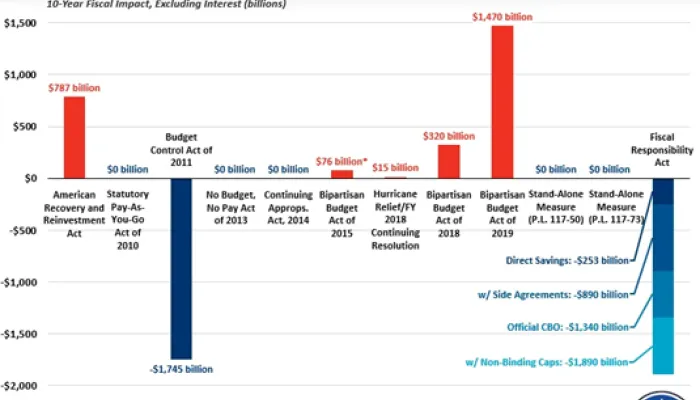New Congress Should Fix The Broken Budget Process
With fresh faces coming to Capitol Hill next year, it is a perfect time for innovative thinking. Given Congress’s recent dismal track record on fiscal issues, we think this should include rethinking the way the federal government develops and adopts budgets. The presumptive leaders of the new House are talking about reexamining their rules and procedures. The President has promised to listen to their ideas. They may not be able to bridge their deep differences on many matters of substance, but on one point they should agree: the budget process is not working.
What is wrong? In the face of the biggest fiscal challenge the nation has faced in a long time, not one of the 12 appropriations bills for the fiscal year that began October 1st has been passed. Instead, we limp along under a short-term continuing resolution. These bills only represent about 40 percent of federal spending, but in the annual process the largest parts of the budget – including the huge entitlement programs and revenue policies – are not even subject to regular review. In fact, special tax law provisions sometimes called “tax expenditures” are invisible and largely ignored when budgets are developed; yet the revenue “losses” from these total at least $1 trillion a year.
We talk about the eventual need to balance revenues and spending, but there is a lack of reality to this goal as long as nothing in the budget process sets limits on new commitments or requires that we pay for the unfunded commitments already made, when budget-making is short-sighted, and when responsibility for the outcome is so fragmented that no one is readily accountable for the result.
It has been over 35 years since Congress – in reaction to Nixon’s overreach in impounding funds in the time of Watergate – last reformed its budget process in a major way. The innovative devices invented in 1990 budget agreement to limit fiscal appetites – caps on discretionary depending and a Pay-As-You-GO (PAYGO) law – are, in one case, no longer in force or, in the other, consistently enforced. These devices, in any case, were designed more to keep things from getting worse – whereas now we need procedures that would help leaders, when they are ready, enact and sustain difficult changes required to shrink deficits and stabilize the debt. This will require a very different set of procedures and controls.
We ought to be able to agree that now is the time to reconsider and reinvent the way the government budgets. As it happens, the Peterson-Pew Commission on Budget Reform – composed of former budget directors, congressional leaders, and other budget experts – has been looking at a range of such ideas for the last 2 years. Its recommendations will be released next week, and we believe they will provide leaders of both parties and both branches a template for a different budget regime designed to help stabilize the debt and put the budget on a sustainable path.


